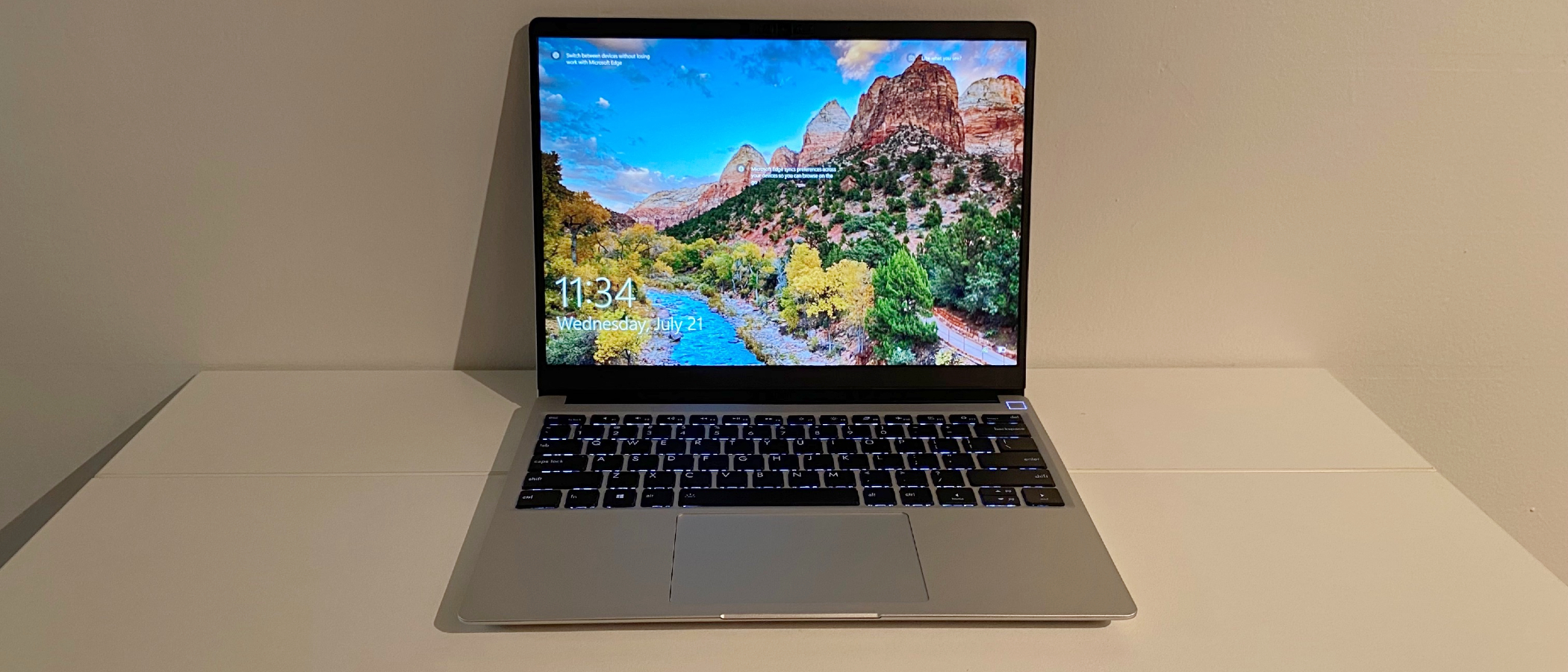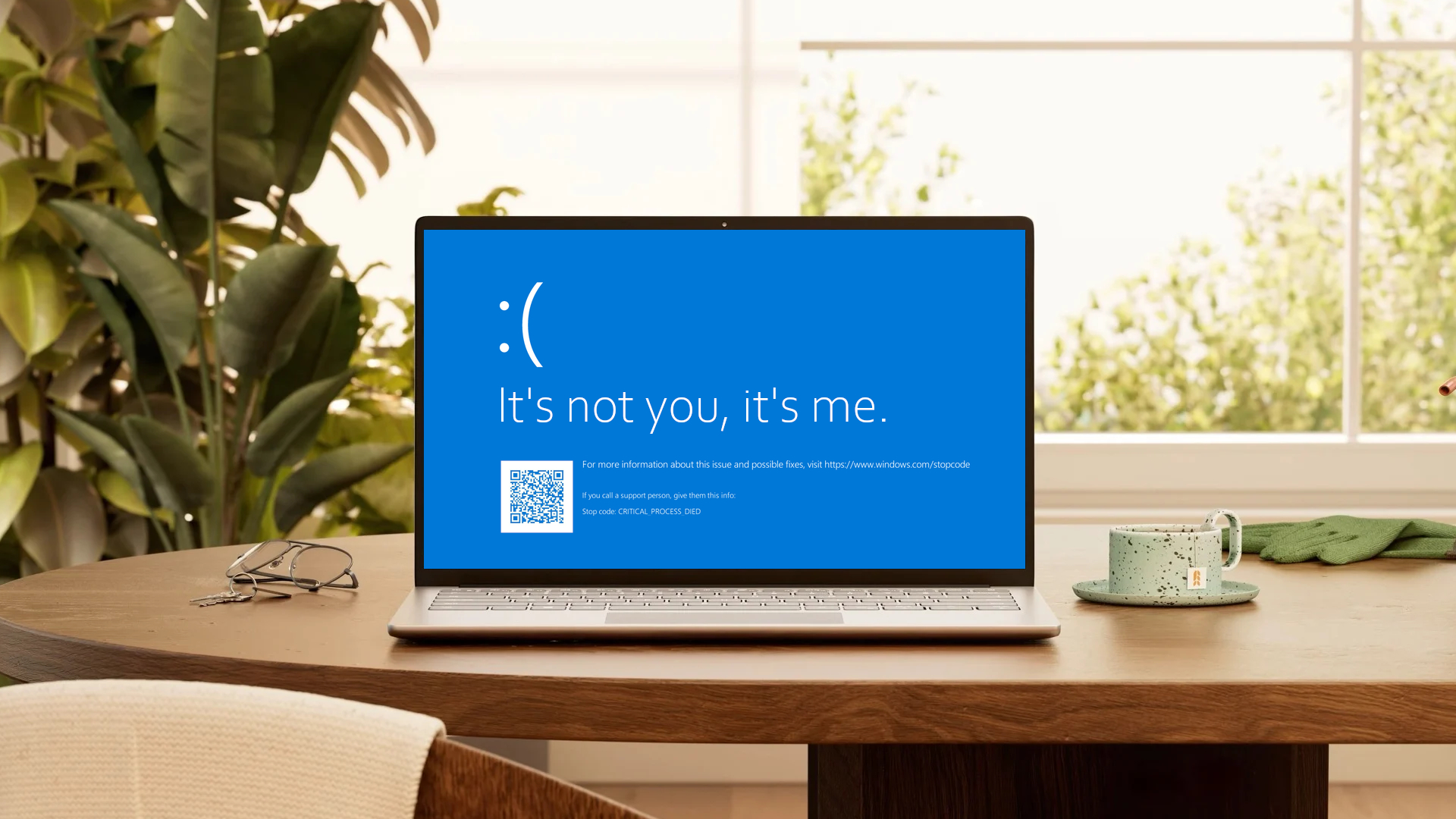Laptop Mag Verdict
Frameworks’ Laptop DIY Edition could be the future as it brings flexibility, repairability, and upgradable performance to consumers.
Pros
- +
Sharp, vibrant display
- +
Expandable storage and ram
- +
Excellent port selection
- +
Lightweight chassis
- +
Easy to build
- +
Upgradable
Cons
- -
Can be pricey
- -
Middling performance
- -
Battery life
Why you can trust Laptop Mag
Price: $749 starting ($2,038 as reviewed)
CPU: Intel Core i7-1185G7 processor
GPU: Intel Iris Xe Graphics
RAM: 32GB
Storage: 512TB SSD
Display: 13.5-inch, 2256 x 1504-pixel QHD
Battery: 7:46
Size: 11.67 x 9.1 x 0.6-inches
Weight: 2.8 pounds
When tech startup Framework debuted its Framework Laptop DIY Edition, it spoke to tinkerers and enthusiasts by giving them something unique: a modular laptop. The clean and simply styled Framework laptop is surprisingly easy to assemble and fun to customize. My son, Matthew, and I received the unit and, within minutes, we're ready to upload Windows 10 to see how it performs.
Can a DIY laptop replace or stand toe-to-toe with a traditional system from one of the tech giants we normally purchase from? Read on to find out.
Framework laptop DIY Edition pricing and configurations
There are three configurations of the Framework Laptop DIY available. I put together the Professional system, which starts at $1,999 and comes with an 11th Gen 4.8-GHz Intel Core i7-1185G7 processor with 32GB of RAM, a 512GB PCIe SSD, an integrated Iris Xe GPU and a 13.5-inch,
2256 x 1504-pixel QHD display. It also has a Wi-Fi 6 card with vPro and Windows 10 Pro. Our unit also came with several interchangeable module ports. Included with our unit were two USB-C ports, a USB-A port, HDMI, a DisplayPort and a micro SD slot, bringing the cost to $2,038.
The base model costs $749 and has a 2.4-GHz Intel Core i5-1135G7 CPU, 8GB of RAM, a 256GB SSD, an Iris Xe GPU, a Wi-Fi 6 card and Windows 10 Home.
The $1,399 Performance model bumps the configuration up to 2.8-GHz Intel Core i7-1165G7 CPU, 16GB of RAM, a 512GB SSD, an Iris Xe GPU, a Wi-Fi 6 card and Windows 10 Home.
But wait, there’s more! Framework also offers a DIY version that starts at $799 and features an Intel Core i5-1135G7 CPU. You can configure the RAM (up to 64GB), storage (up to 4TB), Wi-Fi (Intel Wi-Fi 6E AX210 vPro or non-vPro) and operation system (Windows 10 Pro or Home).
Framework laptop DIY Edition design
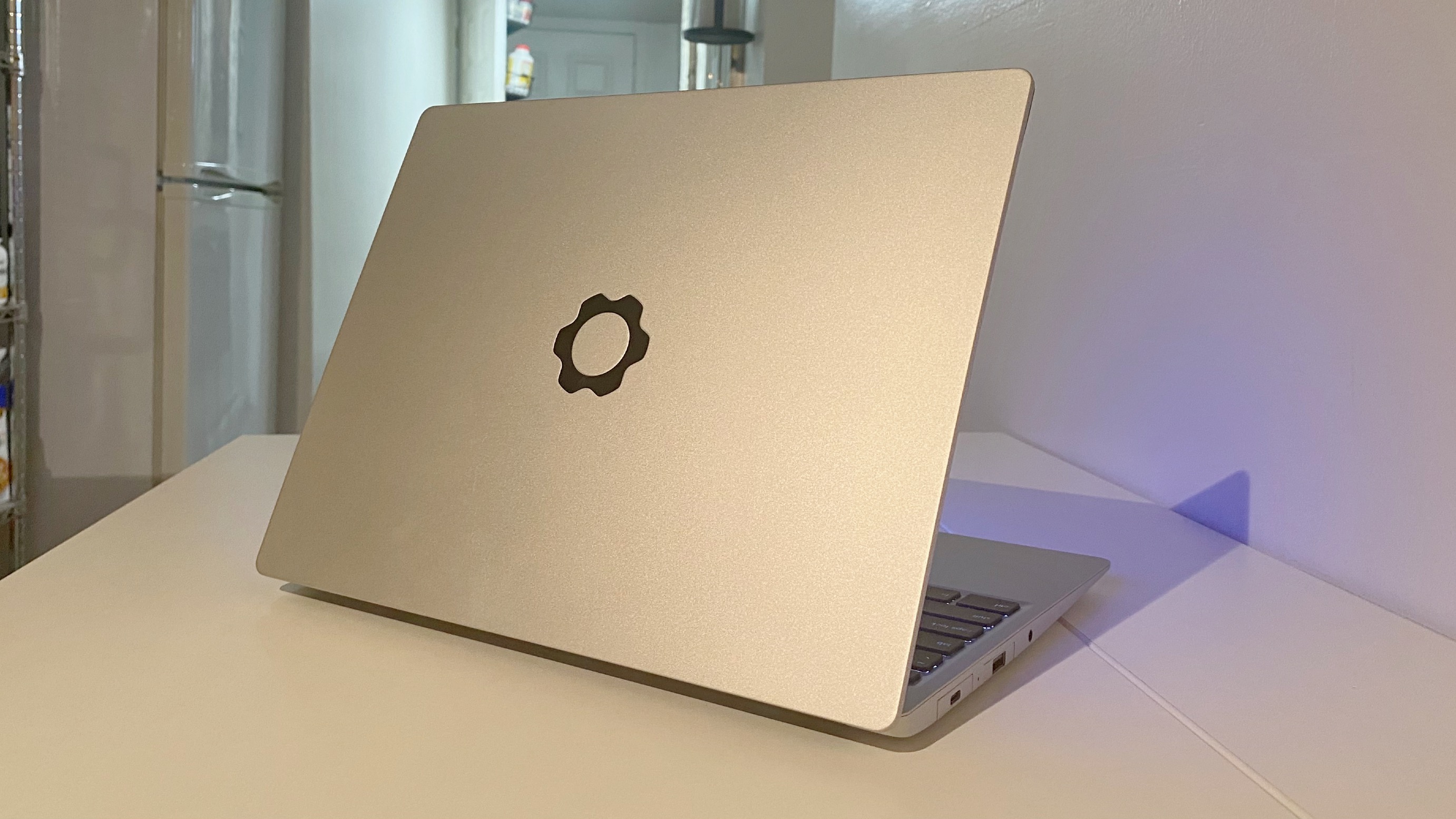
The Framework’s chassis is composed of aluminum, 50% of which is recycled, whereas the plastics in the bezel, keys, and hinge cover are made of 80% recycled plastics. I like the clean, simple styling of the Framework laptop with its chromed-out gear logo on the back of the lid. The silver-colored all-metal deck is spacious for a small laptop, even for someone with large hands like myself. It may even remind you of the Dell XPS 13 or the 13-inch MacBook Pro.
Opening the laptop, you find the display housed in a narrow black plastic bezel with a 16:10 aspect ratio. The backlit Chiclet-style keyboard is nice and clicky with the 4.5 x 3.1-inch touchpad centered just below it.
Speaking of the XPS 13 and MacBook Pro, the 3-pound, 11.6 x 9 x 0.6-inch Framework is on a par with each system, with the former coming in at 2.8 pounds, 11.6 x 7.8 x 0.6 inches, and the latter at 3 pounds, 12 x 8.4 x 0.6 inches. The HP Spectre x 360 13 measures in at 12.1 x 7.6 x 0.6 and weighs 2.8 pounds.
Framework laptop DIY Edition setup
The best part of the Framework laptop experience is getting to work on a DIY project with my son. When you open the box, you will find a box containing the chassis on the center-left side, and on the right, a smaller box that contains the power adapter. Underneath is the box that contains the RAM, the SSD, the port modules and the WiFi 6 card.
Once we had everything spread out on the table, we unscrewed the five screws on the bottom. Afterward, the deck easily popped up and the inside of the unit was facing us. On the right, we found where to pop in the two 16GB memory cards and the Wi-Fi card slot. On the left-center of the unit, we found the SSD card slot and put it in place, and screwed it down.
With that all done, we popped the keyboard deck back into place and screwed the bottom screws back in tight. We turned it over, gave it a once over, and plugged it in. Not a spark was seen so we popped in the supplied USB-C dongle with Windows 10 on it and turned it on. In total, the assembly took less than 10 minutes, and installing Windows took about 10 to 12 minutes. It was very simple and much like playing with a set of Legos.
Framework laptop DIY Edition security
The Framework laptop takes security seriously as it comes with a fingerprint reader located in the power button to keep your files and data secure. The other security measures are the physical camera shutter and mute button to keep unwanted eyes and ears at bay.
Lastly, the Wi-Fi 6 card comes standard with Intel vPro technology which adds a higher level of encryption to keep you protected while using Wi-Fi networks at home, in the office, or at your local coffee shop.
Framework laptop DIY Edition ports
The Framework DIY laptop comes with several port modules, giving you a great deal of flexibility. On the right, we went with one USB-C port and an HDMI port.
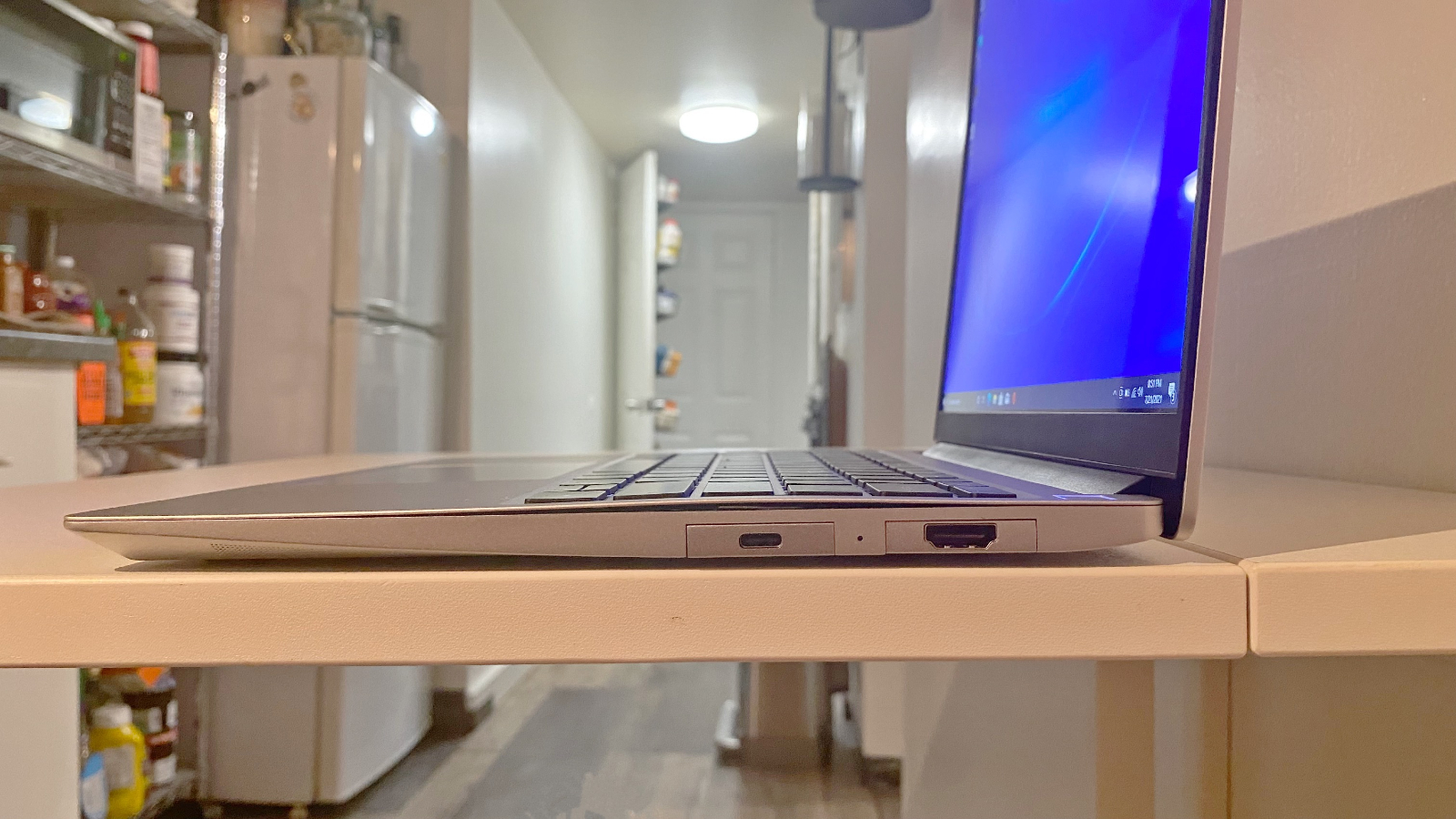
On the left, we chose a USB-A port and a second USB-C port, with the built-in 3.5 combo audio port being on that side as well.
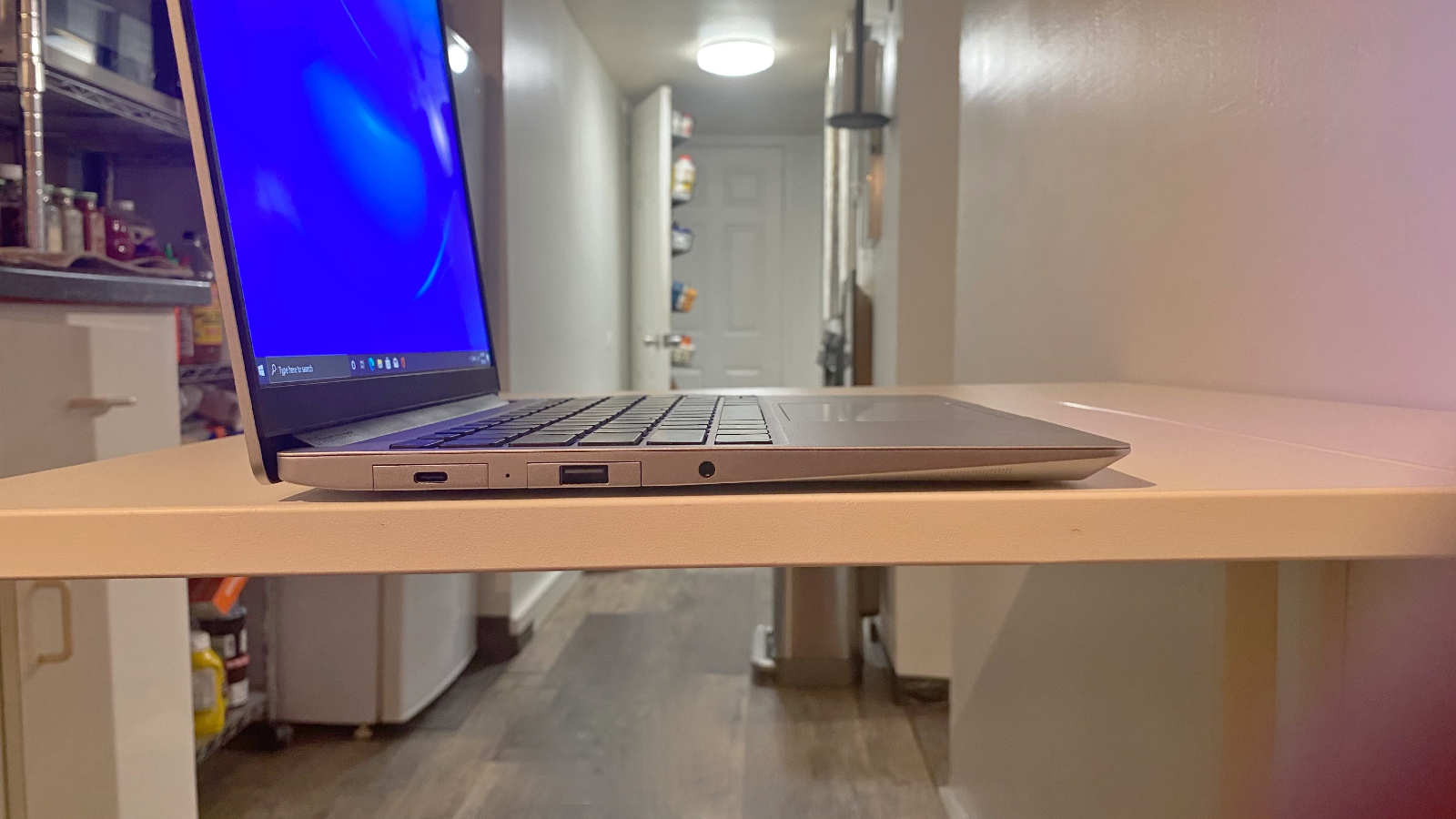
The modules smoothly slip into their housings with a firm click. To change them, you just depress the release button and pull them out. It takes a moment to get used to the mechanism and some physical effort is required because the pieces are held firmly in place.
I like the idea of having interchangeable port options so you can avoid not having a USB-C port or a Mini DisplayPort. The only thing I would suggest is to really think about what ports you need or may need in the future. The other cool thing is, if a new port is created, Framework will make a module for it that you can order later on, which future-proofs your system. You always have four port options, but one USB-C port is needed to charge the unit.
Framework laptop DIY Edition display
The Framework laptop DIY edition arrives with a 13.5-inch, 2256 x 1504 (QHD) display that is bright, colorful, and crisp. I watched the Fast and Furious 9 trailer and the video looked fantastic. The color saturation on the unit is accurate, richly reproducing excellent skin tones. When Dom and his brother are fighting and Dom lands on a red double-decker bus, the ruddy vehicle pops off the screen.

I also checked out the James Bond No Time To Die trailer, and Daniel Craig’s stunning blue eyes were so mesmerizing it made me want to pull out my old blue-tinted contacts and speak in my awful British accent to try to woo my girlfriend. The orange, black, and grey exploding boat scene looked lusciously colorful.
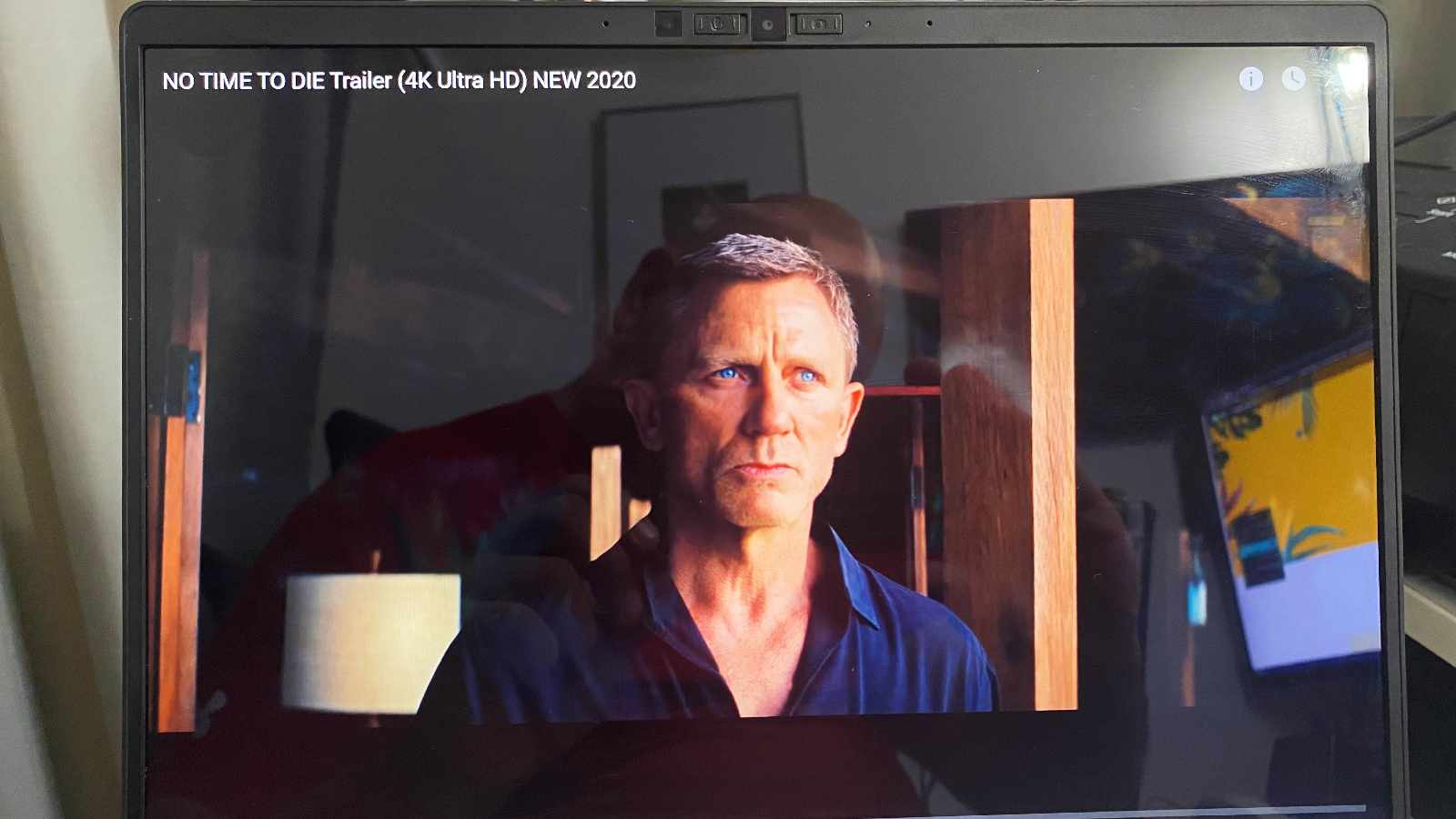
The orange, black, and grey exploding boat scene looked lusciously explosive and colorful. I really like this display and can’t wait for the lab results — Framework picked a good one for sure.
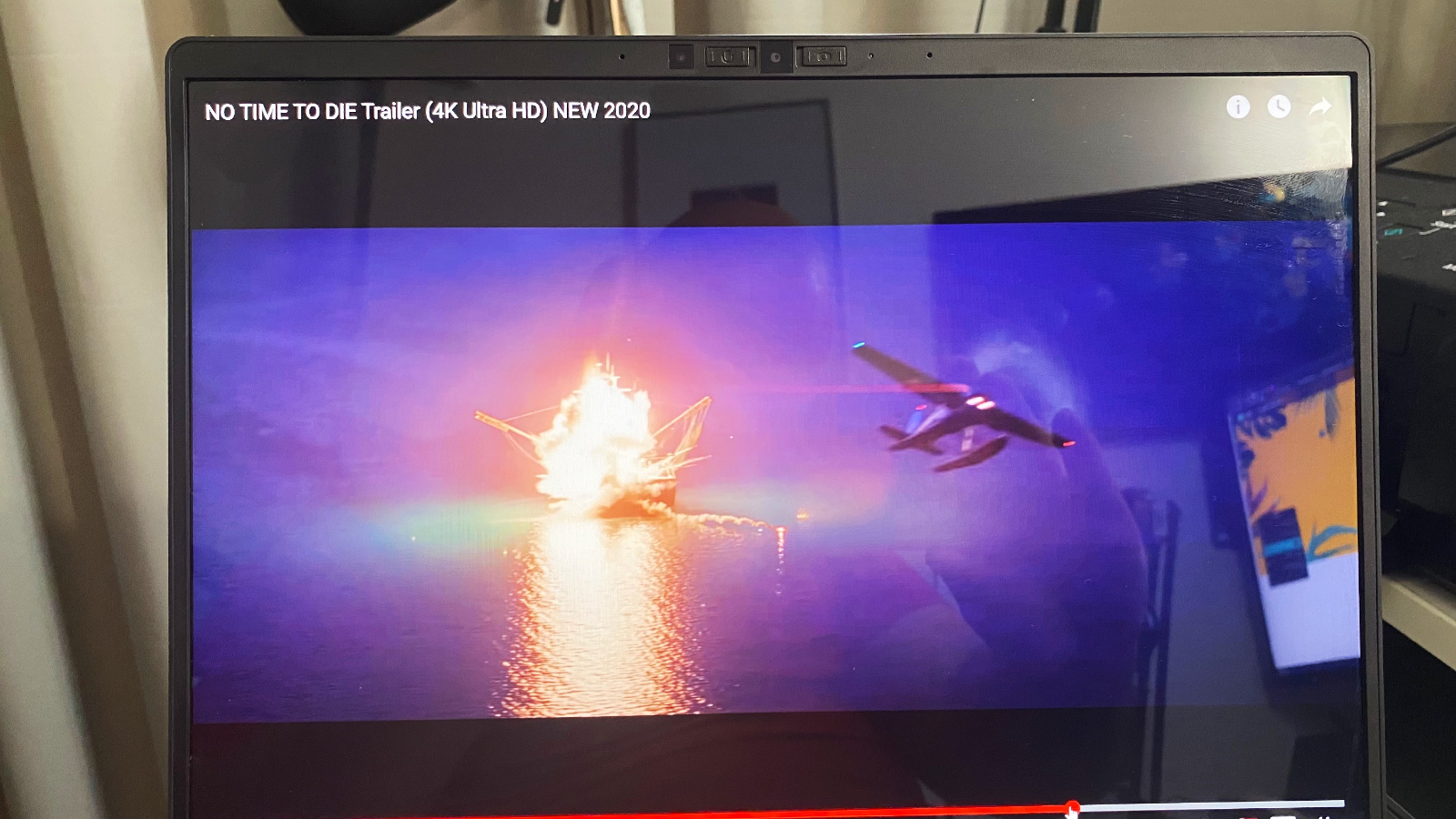
We measured the Frameworks display with a colorimeter and it covered 77.7% of the DCI-P3 color gamut, which put it right in the premium laptop average of 77.3%. The Dell XPS 13 led our group with 81.3% followed by the Apple MacBook Pro 13-inch with 78.3%. The HP Spectre x360 closed us out with 67.7%
On our brightness test, the Framework reached an average brightness of 443 nits, leading our group and exceeding the average of 397 nits. The MacBook hit 435 nits, followed by the Dell XPS 13 with 417 nits, and the Spectre x360 was the dimmest with 391 nits of brightness.
Framework laptop DIY Edition audio
When I read the description of the dual two-watt speakers, I didn’t know what to expect. Usually, dual speakers are weak and tend to be a disappointment, but not in this case. The two speakers located under the front of the deck pumped out clear, loud audio that filled my office space, and most importantly, they had some thump. The bass was clear, clean and no matter how loud we raised the volume, there was no distortion.
While listening to Busta Rhymes’ “Put Your Hands Where My Eyes Can See,'' I could pick up on the initial scratchiness of the track. Then the pumping baseline came through with nice depth, with Busta’s rough timbre reproduced with the respect it deserves.
Later on, I listened to Lyle Divinski’s Uneven Floors album. When the track “Disaster” kicked in with its thumping drums and powerful horns, the track got loud thanks to the excellent depth and thump from these laptop speakers. Lyle’s smooth R&B vocals were clear, crisp, and soulfully filled my work area.
Framework laptop DIY Edition keyboard and touchpad
This Framework laptop comes with a backlit Chiclet-style keyboard. I took the 10fastfingers test and my monster mitts scored 85 words per minute with a 87% accuracy, which is not too shabby. The unit is small, which made me expect the keys to be mushed together, but that’s not the case here. Instead, they are nicely spaced, allowing for a steady typing flow.
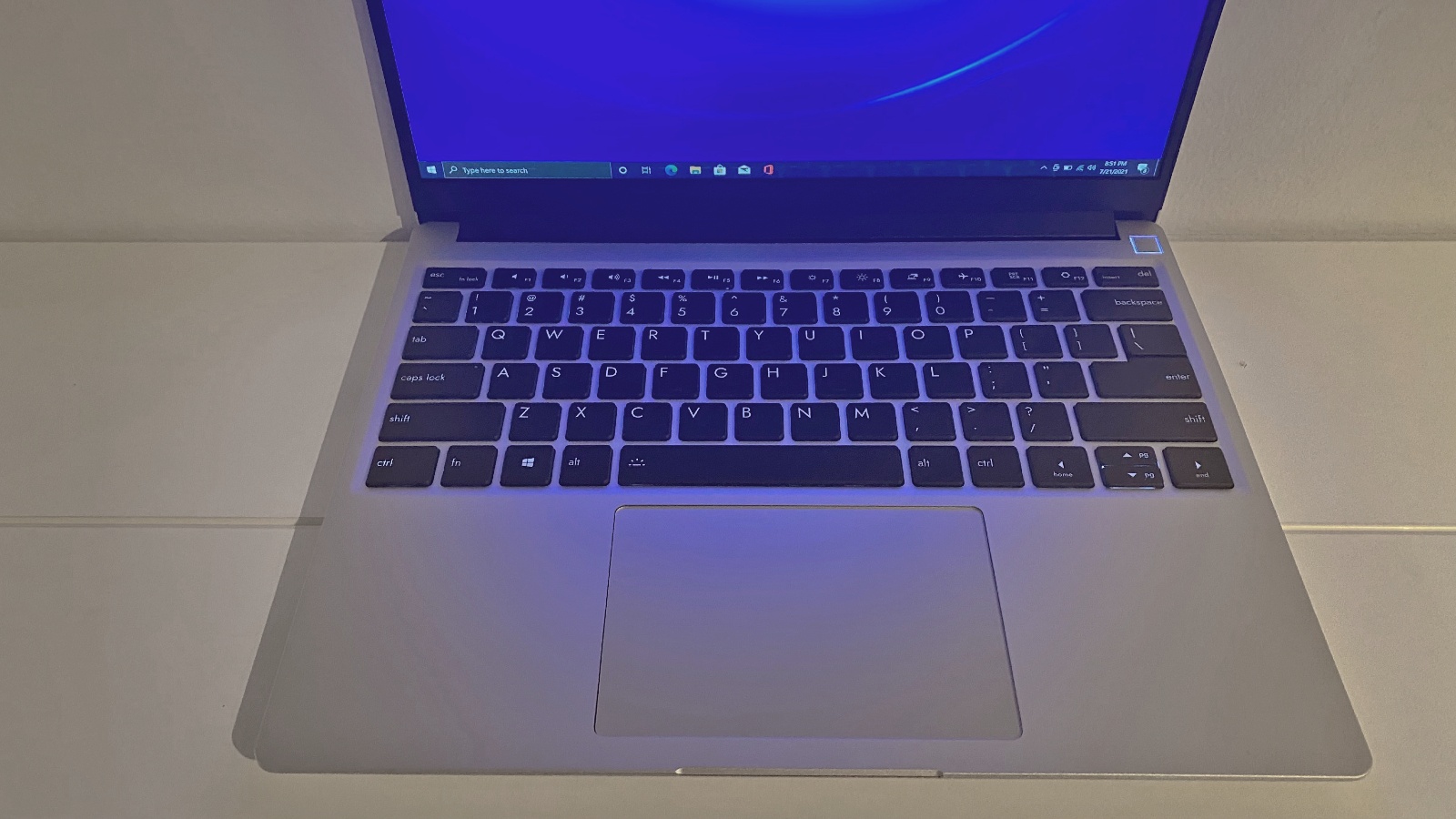
The 4.5 x 3.1-inch touchpad is a good size and handles all the Windows 10 gestures fluidly.
Framework laptop DIY Edition performance
With a 2.8-GHz Intel Core i7-1185G7 processor, 32GB of RAM, and a 512 PCIe SSD, the Framework laptop DIY edition should handle most daily operations with aplomb. I opened up 30 Google Chrome tabs, including several Google Docs, one streaming Loki on Disney+, and another running a breakdance contest from Japan on YouTube; it handled them all without any issues.
The other thing to mention is the Framework’s mainboards are swappable, meaning you can switch out the mainboard and upgrade your CPU, allowing your system to grow with you and your needs.
During the Geekbench 5.4 overall performance test, the Framework scored 4,347, which is below the premium laptop average of 5,124. The MacBook Pro 13 led our group (5,925, Apple M1 CPU). The Dell XPS 13 was next (4,852 Intel Core i7-1065G7 CPU) with the HP Spectre (4,749, Intel Core i7-1165G7 CPU) not too far behind.
On the Handbrake video transcoding test, the Framework took 13 minutes and 21 seconds to convert 4K video to 1080p. It surpassed the 14:54 average but came a distant second to the MacBook Pro 13 (7:44), with the XPS 13 placing third (15:40), and the HP Spectre x360 (18:39) closing out the group.
The Framework performed well on our file-transfer test by duplicating a 25GB multimedia file in 20 seconds at a rate of 1,1338.59 megabytes per second, which incinerated the 5:58 at 542.31 Mbps category average. That blew past the HP Spectre x360 59 seconds(452.6MBps, 512TB SSD) and XPS 13’s 1 minute 45 seconds (512GB SSD) 238.1MBps.
Framework laptop DIY Edition graphics
The Framework comes with built-in Intel Iris Xe graphics, which is mostly fine for your everyday document pushing and daily needs. ]
We tested the GPU using Sid Meier’s Civilization VI: Gathering Storm (1080p) benchmark. The Framework scored 35 frames per second in 1080p and 33 fps in 1504p, easily beating the 25-fps laptop average. It was enough to crush the XPS 13’s (Intel Iris Plus) 19 fps but it landed in second place behind the MacBook Pro 13’s (Apple M1) 29-fps score in 1080p, with the HP Spectre x 360’s 23 fps (Intel Iris Xe) falling just under the average.
During our synthetic 3DMark Fire Strike test, the Framework scored 4,410, which came in above the 3,599 category average, followed by the HP Spectre with 4,459. The Dell XPS 13 closed us out with a score of 2,837 on this benchmark.
Framework laptop DIY Edition battery life
During our Laptop Mag battery test, which involves continuous web surfing over Wi-Fi at 150 nits of brightness, the Framework lasted 7 hours and 46 minutes, which is way shorter than the 12:12 premium laptop average. The MacBook Pro owned this category with its 16 hours and 32 minutes of battery life. The Dell XPS 13 lasted 12 hours and 39 minutes, with the HP Spectre x360 also surpassing the 12-hour mark at 12 hours and 32 minutes.
Framework laptop DIY Edition heat
During our heat test, which involves playing a 15-minute fullscreen, 1080p video, the underside measured a hot 95.5 degrees Fahrenheit, just a tad bit over our 95-degree comfort threshold. The touchpad was much cooler at 81.5 degrees, with the temperature between the G and H keys reaching 94.5 degrees during testing.
I only heard the fans come on once twice during normal document pushing, internet browsing, watching videos.
Framework laptop DIY Edition webcam
Another spot where the team at Framework made an excellent choice is with the built-in webcam. It's 1080p, with the ability to capture video at 60 frames per second and it has an 80-degree wide viewing angle. It’s one of the better webcams on a laptop I’ve used so far. It captured some very nice, bright images and videos in my simply lit office space. Also, the Windows 10 camera app’s autofocus worked quickly.
Bottom line
With Right to Repair becoming a major rallying cry the world over, the Framework Laptop DIY Edition could be considered an excellent solution. It took my son and I less than 15 minutes to put the system together and start loading Windows 10. With its gorgeous display, excellent speakers, and awesome 1080p webcam, the Framework has a lot going for it. Another perk is the ability to choose a Linux OS over Windows, which allows consumers to build a very personal system and have the best possible experience for their needs.
However, similar to most laptops, it can get expensive to trick out your Framework. To keep costs manageable, be sure to research and think about your needs before you start ordering every high-end module. Still, we have to praise the Framework for having a mainboard that is upgradeable, allowing you to swap it out and put a more powerful CPU into the laptop as a means of future-proofing.
In the end, the Framework Laptop DIY edition is a fun and capable laptop that could one day change how laptops are built.

Mark has spent 20 years headlining comedy shows around the country and made appearances on ABC, MTV, Comedy Central, Howard Stern, Food Network, and Sirius XM Radio. He has written about every topic imaginable, from dating, family, politics, social issues, and tech. He wrote his first tech articles for the now-defunct Dads On Tech 10 years ago, and his passion for combining humor and tech has grown under the tutelage of the Laptop Mag team. His penchant for tearing things down and rebuilding them did not make Mark popular at home, however, when he got his hands on the legendary Commodore 64, his passion for all things tech deepened. These days, when he is not filming, editing footage, tinkering with cameras and laptops, or on stage, he can be found at his desk snacking, writing about everything tech, new jokes, or scripts he dreams of filming.
